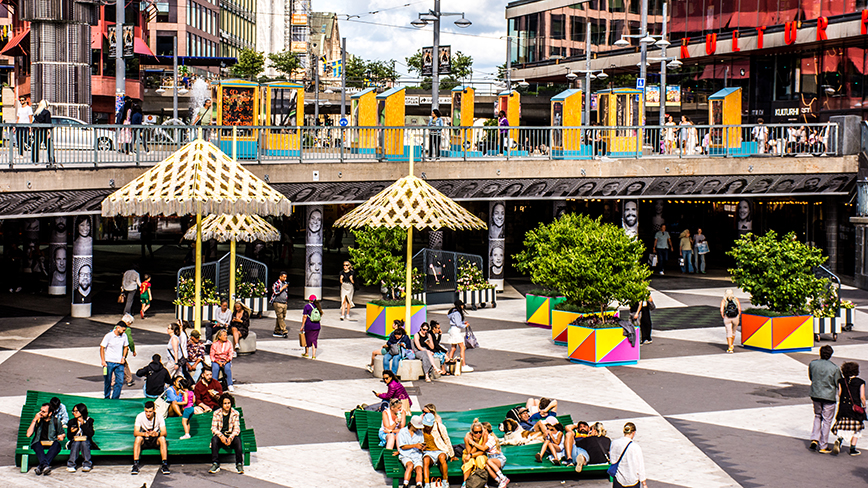Tackling inequalities in the city - for an accessible and fair city

Urban segregation and unequal living conditions are a growing problem that risks pulling society apart. In the ‘Shared City’ project, Ann Legeby, Professor of Applied Urban Design at KTH Royal Institute of Technology, and her research colleagues want to map inequalities generated by the built environment and identify more or less visible barriers in the city.
"The project wishes to transform to an equal and accessible city, a city that is continuous to promote exchange and foster higher levels of sharing," says Ann Legeby.
The project aims to develop knowledge about the impact of urban space on social segregation and unequal living conditions. The researchers will study how the spatial characteristics of the built environment drive, reproduce or counteract segregation.
Previous research studies show a connection between how we design and shape our cities and our opportunities to share social resources. It also affects the extent to which we can share public space and be aware of other people and social groups, which ultimately impacts social integration and cohesion.
An urban typology that is hierarchically organised
The Swedish urban landscape is largely characterised by a hierarchical urban typology with a segregated public space that effectively separates communities but also activities and functions. Such a structure also provides weak support for local economies and different types of services.
"To achieve national and global sustainability goals, planning and construction must be radically transformed so that the built environment helps to counteract segregation and social polarisation. ‘Planning and urban design practices involve the distribution of resources, but issues of equal living conditions or social sustainability have not been sufficiently considered," says Ann Legeby.
Despite ambitious goals, such as Sweden's national targets on segregation and inequalities (Government Offices 2021) or the Policy for a Designed Living Environment (2017), the role of urban space and the built environment for social sustainability issues remains understudied.
"This is serious when it is clear that extensive investments in the built environment and infrastructure have resulted in increased inequalities and that segregation has been reproduced or reinforced. In addition, climate change means an increasing need to generate integrated urban design solutions that address social and ecological challenges," says Ann Legeby.
Major benefits for several stakeholders
In the ‘Shared City’ research project, Ann Legeby and her research colleagues want to learn how the built environment and relationships between urban spaces affect the conditions for social processes. The characteristics of the built environment that have the potential to counteract segregation and offer resilience to climate change will also be identified. The models and analysis methods that are further developed will benefit municipalities, regions, property owners, investors and ultimately city residents.
KTH has already created a network with several municipalities that are developing their work on urban space analyses, impact analyses, and goal fulfilment analyses. However, more work is needed to develop theories and refine methods further. Work is needed to develop useful and reliable standards for urban form modelling and how to handle data and ensure appropriate quality.
"Collaboration with practitioners is crucial to support implementation processes and to identify and evaluate potential barriers and difficulties. Collaboration also provides valuable information for research activities and contributes to continuous further development."
